There are two topics that people have repeatedly asked me to write about, a cooking guide to rustic living and some type of prepping guide to living life in the remote wilderness.

Years ago, before the kids came into our lives I started writing a cookbook and got an agent interested in working with me and then… I got too busy to focus on a project like that. It’s something that I really want to do but I just haven’t been able to afford the time. I keep chipping away at the cookbook project more every year writing my recipes down and making commentary. I learn more every year about using my dry goods and the art of cooking on a woodstove. Things evolve and tastes change. I’m sure one day when my cookbook does become a reality it will be better off for the time it was allowed to evolve. For anyone who has continued to reach out about a cookbook thank you so much for the encouragement to keep it alive. It’s not a lost dream, God willin’ and the creek don’t rise, it will happen someday. Our main focus right now is getting Tyler’s first book published – a memoir of the journey we had after we met and moved to Alaska all the interesting things that transpired which led us to life in the wilderness. I had just turned 24 the fall we ventured into the bush to sow our newly wed roots. As I begin this writing today July 31, I am now 38 years young. We are hoping over time to write down all of the various stages of our journey living life in the Arctic wild, Tyler’s book would be like the prequel to the life we lead today.
I’m not all that interested in writing a survival guide. Mostly because I think it’s impossible to accurately do such a thing as everyone’s situation varies so much when it comes to emergency survival. However, living in the Arctic wilderness for six months at a time without resupply has definitely taught us a few lessons over the years. I’m very good at preparing for isolated life in a remote setting and could probably accurately supply our family with enough food and gear to live for a couple of years with no intervening support without much of a problem. Tyler and I spend so much time together in a highly isolated environment that our conversation has drifted to the what if’s of survival in some sort of apocalyptic scenario more times than I can count. It’s not a paranoia that brings our minds to think about such a situation, it’s just very easy to imagine that the rest of the world doesn’t exist when you see no signs of life from the remainder of humanity for months at a time. We think of the topic of survival as sort of an academic exercise.
One reality is that there is simply no G-rated version of a situation that would require prepping. It’s hard to go there, the idea of this kind of societal or environmental breakdown is dark no matter how you skin it. Most people live in cities and they wouldn’t have access to fresh water like we do or game to hunt or access to firewood for heat or whatever. In places of dense populations things would just be bad, they would get ugly fast. I don’t know how to survive in a big city without any problems when things are running well, let alone in the case of a serious event.
Sometimes I’m cabin bound with the kids because of extremely cold temperatures and often Tyler is gone for days at a time working on the trapline. My mind has drifted to thinking about the life of space bound astronauts during such times. And after years of winter cabin-boundness I think I just might be able to make it through training as an astronaut. In the middle of winter when there’s only four hours of dim light outside, no visible sun and you step out of the cabin into -40 it can feel like my idea of outer space. This has also got me to thinking that if I lived in a city and wanted to be prepared for a disaster I might make my model after what the astronauts stock before they board ship for a long mission. It would probably be a good model for someone with a relatively small amount of personal space.
Exercise is key. If you want to have a chance at making it in a dire situation it’s best to stay fit. That’s been a difficult one for me since having the kids. Tyler’s off working most days getting all kinds of fresh air and exercise. I’m often weathered in the cabin a lot with the little ones. I personally loath stationary exercise. I prefer doing some type of hard work outdoors or jogging. I used to have a strenuous yoga routine I would do for about an hour a day before the kids were born but haven’t been able to get myself back to it yet. I gained a lot of weight during my pregnancies and have been battling the bulge ever since. I’m not back to where I was pre-kids yet but I’m working hard to get there and continually improve every year. In town I jog often with the children in a double stroller. Out in the woods. I’ve developed a running track around main camp that I jog around in continual loops for an hour or so every chance I can get. I choose to run on a small 1/4 mile track near the cabin mainly because I don’t want to carry a gun while I exercise. We have good trails going out into the country that I could use but it wouldn’t be the best idea to go running in the wilderness alone without a gun. While the chances of actually needing a firearm are slim, the off chance that you needed it would be a fatal mistake should you be without. If Tyler’s around he watches the kids at least every other day so I can work out. It always feels great and I desperately need some time to be in my own mind after being with the kids day in and day out. I want to be healthy for me and I want to be strong for my children. If they ever needed me in a difficult situation I want to be up to the challenge. In an isolated situation exercise is very healthy for the mind and body. I’ve heard that astronauts dedicate two hours of their day to exercise when they are on a mission and I think I understand why NASA puts a priority on this.
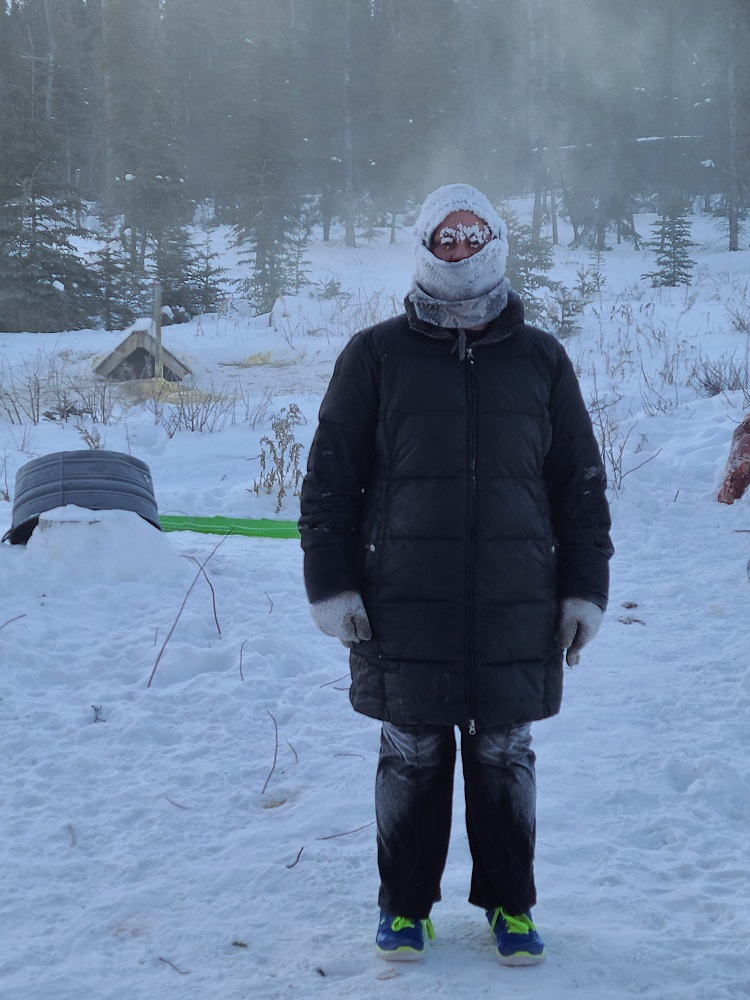

Entertainment is important too. A deck of cards is always a good idea. A chess board. Pencils and paper. Books are the best though. I become a very dedicated reader in the winter. I read somewhere between 25 and 30 books every winter. When the kids go to bed I begin to read. I really love it. It’s my checkout time. To go somewhere else in my mind and learn something new. A few years ago I broke down and bought a Kindle E-reader so I could have lots of books without the cost of freight. Mostly because I wanted the space for Sidney and Blaze to now have plenty of books and school supplies. I recharge my kindle on a gadget connected to a Milwaukee power drill battery that has a USB cord plugin. The battery on the Kindle lasts a very long time between charges. I don’t have to recharge it more than twice a month. In the case of a catastrophic event I’ll be glad that we spent many years building up a decent paper library before I got the Kindle. It’s good to have technical books like first aid and a detailed book of edible local plants, a book or books about anything you might want to build or engineer. I have a fun book about willow and birch basketry, for example. You never know.
We are so far North that solar panels don’t do a lick of good for two solid months in the winter. We’ve had a small one for years that Tyler’s dad gave us the first season we spent remotely and I recently bought another larger, more sophisticated panel to save on gas for our generator during the months that actually collect solar light in the Arctic – Sept. and Oct., a little in November, and then lots starting in March again. We have a battery bank of four 100 amp hour 12v sealed lead acid batteries that power our array of LED puck lights in the cabin and anything else we might need in short bursts like recharging the satellite phone. We get enough wind where we live that I’m very interested in installing a wind turbine but I haven’t completed my research well enough yet to make the right purchase that would suit us. We run the generator during the darkest time of winter about once a week, overnight, to keep the batteries charged for the lights. For years we used only kerosene lanterns for light until I became pregnant with Sidney and we switched over to RV LED puck lights. They are easy to install, wire to a 12v battery and are very efficient. The light quality has come a long way too from the first ones we used which emitted a awful, depression inducing blue hazy light. Kerosene fumes aren’t the healthiest, but they’re better than no light at all, if that’s all you’ve got. And it’s about as low-tech, straightforward as you can get. Believe it or not, overall the generator eats up less gallons of gas charging the battery bank than the amount of gallons of kerosene it would take to keep our lamps going all winter. We still use kerosene at our line cabins and I doubt that will ever change. For simplicity sake, if I were prepping for a shorter power outage or something like that I would purchase a few kerosene lanterns and five or ten gallons of kerosene. In a land where the sun disappears for a couple months light becomes a pretty important thing. Candles are good but don’t last very long and aren’t very bright, but they don’t emit toxic fumes either. The non-scented kind anyway!
The other thing to worry about is keeping warm and fed. For me this means a good woodstove with a nice flat surface for cooking on. The new woodstoves are no good for cooking on, they don’t have big flat tops and they heat up way too slow. A sheet metal or plate steel stove is the way to go for a self-sufficient, cabin-style setup. It’s a good idea to have some magnesium and a flint and steel. We even have a set of military snow shoes that are made out of magnesium. (FYI — Magnesium is soft and easy to scrape off into a small pile, the filings flame up when they come in contact with a spark.) I also tend to horde a few select survival items up on the trapline in case of hard times. I buy matches out of habit every year and 3 boxes of 300 matches adds up over 14 years which I guess makes me a serious match hoarder because we rarely go through more than a single box in an entire season! (Due in large part to the fact that the woodstove goes continually for 5 months without a relight) Tyler keeps telling me to get them off my annual list but I can’t stop myself. A box of matches is little and light – what’s the harm in it? I’m so accustomed to having a woodstove going that if I stay at a hotel or somewhere unfamiliar in the winter I feel like somethings missing. I feel an urge to be proactive about the heat situation. I have a healthy collection of lighters as well. I never go anywhere when it can get chilly outside without a way to light a fire.
For us survival means getting our own food. Having a couple guns around is pretty handy for this. A .22 rifle is good for small game like bunnies, fowl and squirrels. A higher caliber rifle is good for targeting larger game, like deer or elk or in our case, caribou, moose and bear. We favor a 30.06. We have other guns as well, but a .22 and .06 or comparable caliber are the most sensible rifles for our region. We have plenty of ammo and always buy more when it’s convenient to stop in a store that carries it. Fishing gear is good to have, as well as material to make snares of various sizes. A collection of vegetable seeds suitable to your growing zone sealed in a dry glass jar isn’t a bad idea either. We’ve been gardening in our area which Zone 1 for about 15 years now and have learned a lot along the way. After Covid struck I’ve been getting more serious about saving my own seeds. It was really difficult to find the seeds I wanted the first spring of the pandemic. That was really annoying! If you want to be truly self-reliant I guess you have no one to blame for shortcomings but yourself. You may be growing your own food but the truth is you’re not really self reliant in your operation if you’re buying your seeds from a catalog – which for the most part we still do.

Don’t buy junk for your kitchen that’s destined for the landfill. Quality is key. A kitchen should have good knives and a sharpening stone. Modern pots with nonstick surfaces are toxic junk. I keep a variety of cast iron pots and pans, I have a steel steamer pot for doing boiled noodles and such. I keep an enameled cast iron pot for cooking rice and making acidic things. Acid reacts to cast iron and makes everything made with tomatoes for instance, taste off. Cast iron is best used with non-acidic foods heavy in oil or fat. If you boil oatmeal every morning in a cast iron pot your teeth will turn blue. I know this from first hand experience. Tyler and I have got some good laughs out of looking at each other blackened teeth after a winter of cooking in iron. Steel and wooden mixing bowls are best. Plastic bowls end up in the trash. Glass cake and bread pans last while the enameled ones eventually get scratched, thin out and rust. Its good to have a pressure canner and mason jars and lids. If the power goes out you could save a meat supply in warm seasons from spoiling. You can also dry meat during warm seasons as well. I suggest drying quite small and very thin pieces so the process is fast and the worry of insects is minimized. We make dry meat for snacks in the winter. We cut moose or caribou into thin strips and brine it over night in salt and whatever spices we fancy. The next day we hang it from a fishing net that’s strung out on the tie logs for the loft of our cabin. We can hang a lot of meat on this net and it dries well and fast in our warm log cabin. You may be wondering, no cooking required? Yes, if raw meat is air dried like this in an oxygen rich environment it can’t make you sick and it will last for a very, very long time. It’s also quite tasty. The winter is great for drying meat because there aren’t any bugs around and wood stove heat keeps the cabin very dry. Our kids love dry meat for snacks.

Another thing that I tend to hoard is salt. Sometimes when I’ve been thinking about a doomsday scenario I realize that it would be impossible to prepare for a lifetime of the luxuries of life as we know them. Coffee is going to run out and that would be really sad but I’d switch to natural teas – stuff that grows wild in the area. Flour is going to run out and I would miss that type of carbs to the point of tears. Sugar is going to run out too but I guess there’s always berry season. A lot of items in your kit are going to run out or go bad after about 10 years. People often say that if they could only choose two things to have for survival it would be salt and bullets. Ammunition is an obvious one. Salt is just so handy for so many things in food preservation – it can be used to corn meat, it can ferment vegetables safely into various Krauts and I if all else failed I just plain need to be able to salt my food for the rest of my life, haha. I definitely want to have a reliable supply of salt. So that’s something I buy more than we’ll be needing every year and it is adding up. It’s like an investment or something I guess.
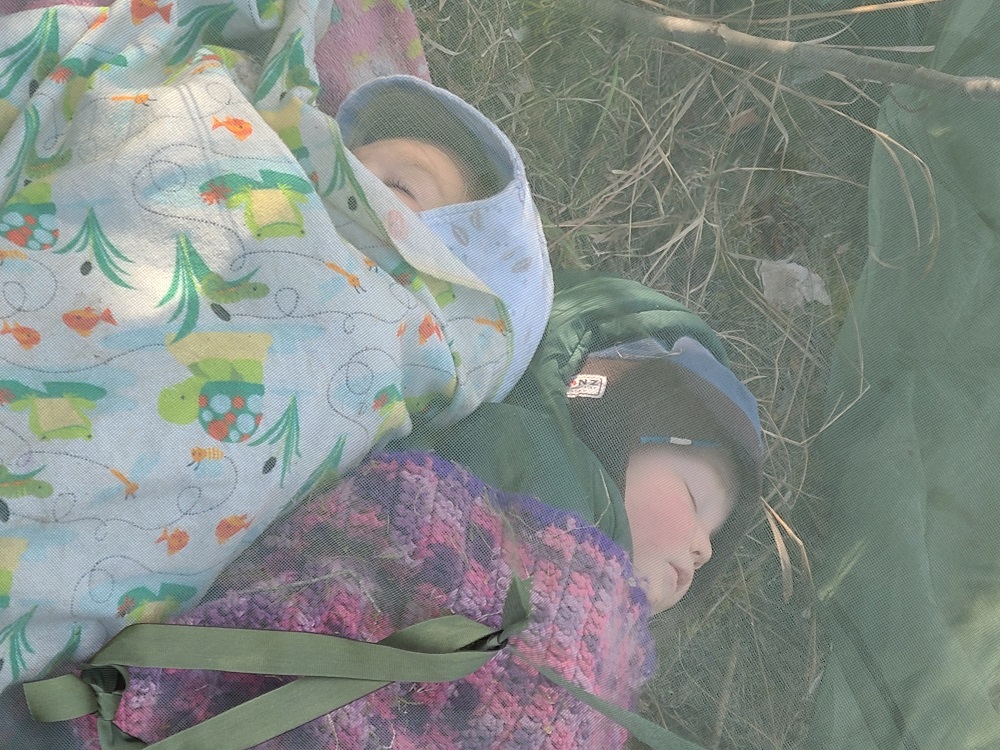
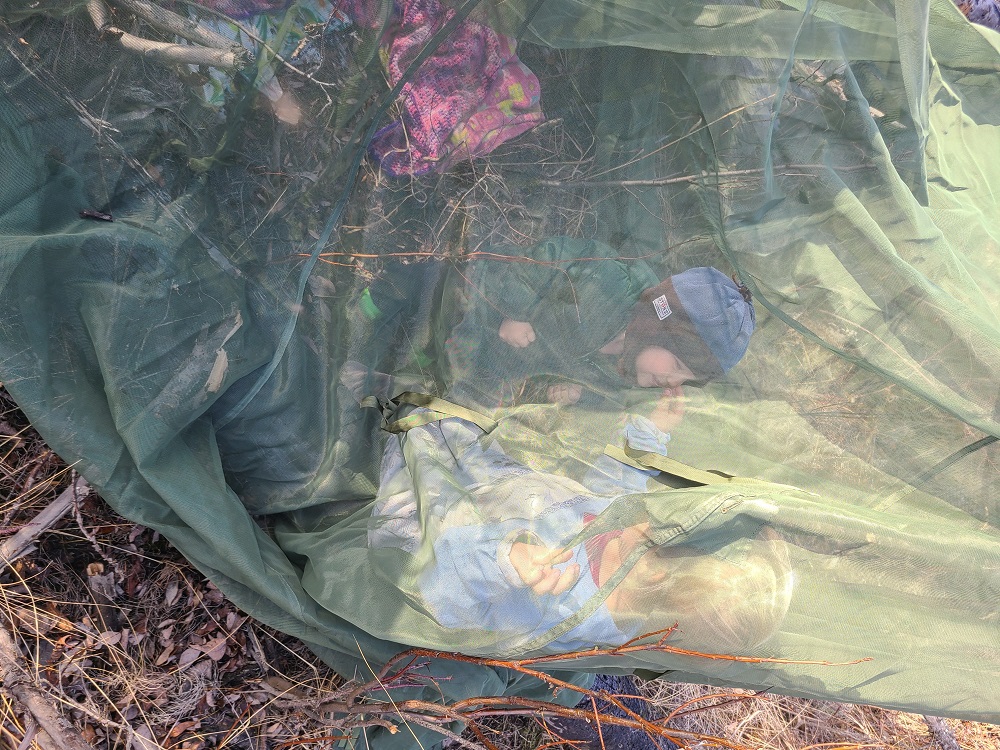
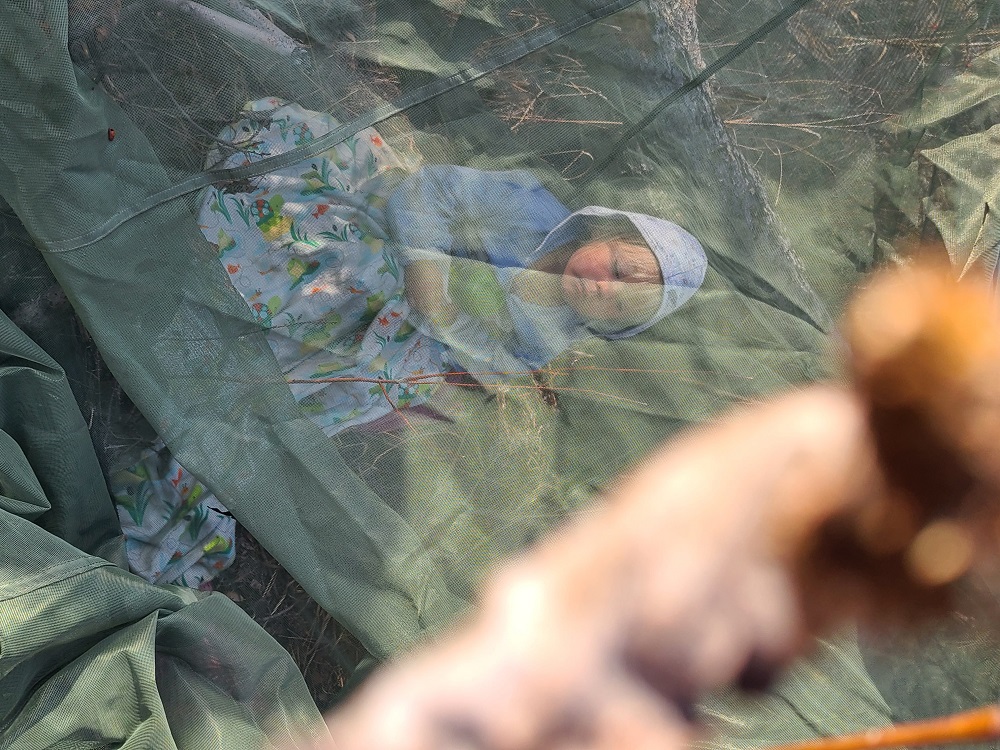
Sewing supplies are a must for being prepared. Last winter I made a mistake and I forgot to bring enough thread out for all my sewing projects. I took it for granted that there would be enough from the previous year because I hadn’t written it in my notes and my sewing has increased since our kids aren’t nursing babies anymore. I really had a panic at the beginning of the season when I started sewing and started getting out my inventory. I had everything I needed, fur, leather, material but I was low on thread! I scrapped around in some of the containers in our old cabin and in some of Tyler’s repair kits and I was able to make it through the season no problem, but do you think I’m going to let that happen again? No way! I’m going to send out a bunch this year. It’s fairly expensive, but it’s light and small to pack and I never want to be without an ample supply of thread again. Needle and thread could be the difference between life and death in the right situation. I’d learn how to make sinew thread if I had to but I don’t want to spend time on that now. I could reuse thread and try to make thread out of various things but I’d rather not. It’s good to be efficient when you can. I just want to have enough needles and thread to last a while. Also bug netting is always a handy thing to have around if you had to spend the summer months out in the woods. The bugs in Alaska’s bush could literally suck you dry.
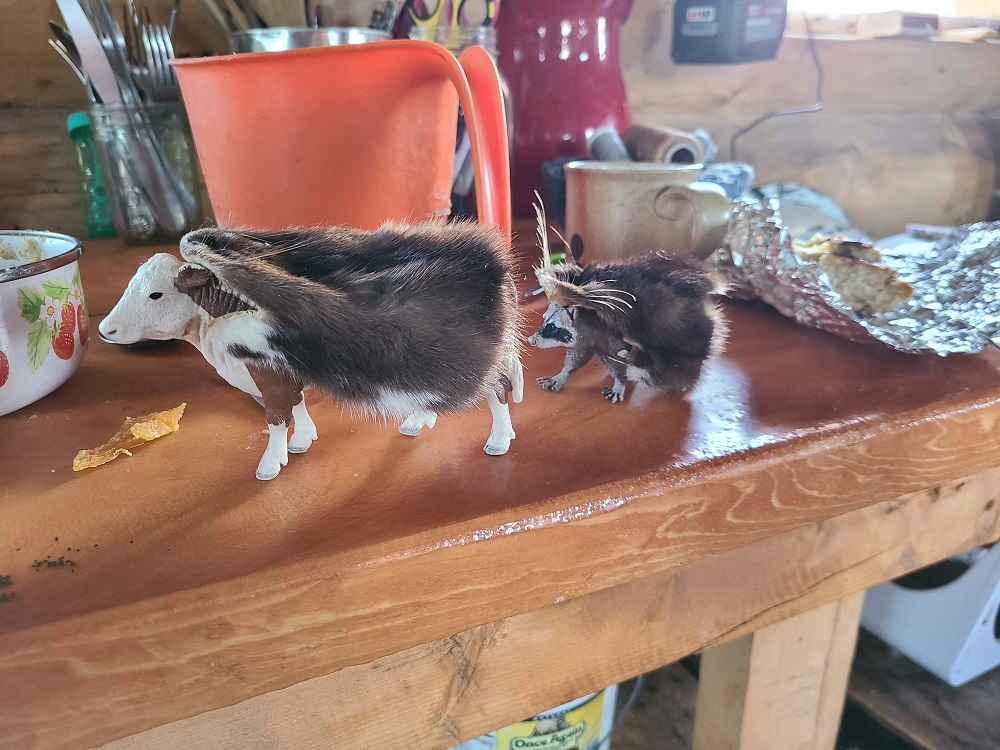
A bow saw with plenty of extra blades, a good ax with a steel handle and a file for sharpening it are absolute necessities when you live in cold country like we do. An ax is the quintessential backwoods survival tool.
Wool blankets are perfect for so many reasons. They are fairly small and packable. They are easy to wash by hand, in comparison to a big fluffy, modern-day comforter. They will last a very long time and provide really nice warmth. We have an original Hudson bay 3 point blanket that we received as a gift when Sidney was born. It’s very old and looks like new.
Toilet paper is a very fine luxury but obviously people know that judging by how the beginning of the Covid pandemic played out with people buying it clean off the shelves. It would suck to run out of toilet paper but there are worse things. There’s always plenty of moss around where we live so that’s what I would collect to use. We bring a jumbo Costco case of it out with us every winter and its always plenty.
Access to clean water — we’re super lucky in that regard. I don’t really spend much time thinking about that one because we have an ample supply. We have a pitcher pump well in the cabin now but it does have a few parts that need to be replaced on a regular basis. But the pump is a luxury. Should it fail we can we can walk down to the river with something to carry water back in. I’d make bags made from moose stomach if I needed to. We’ve never filtered the river water even when it was our primary supply. Don’t get your water by a known beaver den and you’re usually alright. Neither Tyler or I have ever suffered from Giardia though we keep Flagel -a medicine that kills the bacteria – in our first aid kit. A serious problem with the public water supply is definitely a potentially fatal issue for a lot of people. Learn to distill dirty water through evaporation and condensation. A piece of plastic sheeting might be handy for collecting rain and dew. The water situation is very individual, but it’s so basic to survival that it should be considered by everyone.
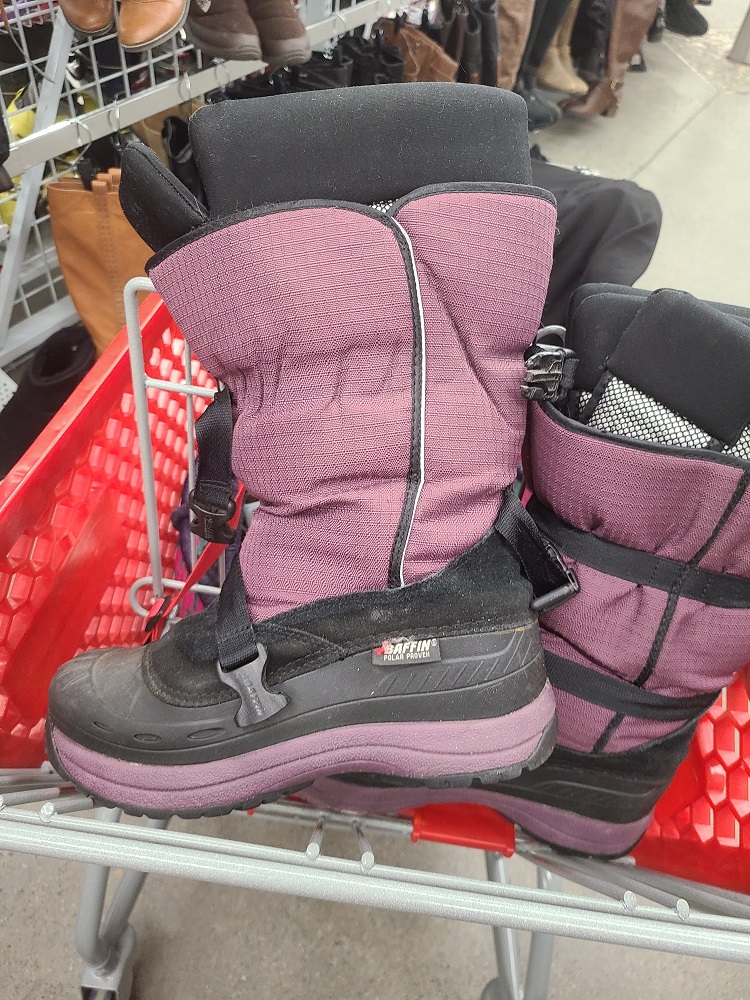
Take a first aide kit seriously. Over the last 14 years of being out in the woods our kit has kept increasing in size as we add to it and think of new things to put in it. Tyler and I each keep an old spare set of spectacles in our kit in case something should happen to our glasses. Though I think people could adjust to life without corrective lenses – if not how would humans ever have made it this far? Tylenol is a basic must. A few different antibiotics are good. There are six different antibacterial classes and they all go to treat different kinds of infection. If your going to keep them around don’t throw out the drug facts sheet that comes with the medicine. Keep it as a reference in the kit. That has been handy for me before. Aloe is a good one for burns, various bandages and wraps are good to have around. We have some suture kits, though I also bring fresh super glue every year because if one of the kids needs a few stitches I’m pretty sure I’m going to use butterfly strips and super glue if it’s not too big. We even have a field surgery kit but I sure hope we never see the day that’s needed in camp. I keep an antihistamine around. Whiskey is a good one to have a little stash of – if you ever had to pull a tooth or set a broken bone a pull of whiskey would go a long ways. Iodine, rubbing alcohol, vinegar, triple antibiotic ointment and peroxide – all simple but useful items to keep on hand. We have a bottle of stool softener and funny enough its really helped us out with a few dog digestive problems. I have some special putty that you put apply to dry onto a chipped tooth. We have about 10 pills of a narcotic in case we ever need it. I believe in the healing power of a good cup of chamomile tea. Tea tree oil is an herbal necessity to me in a first aide kit. You can dilute it in oil to put on your skin. It’s antibacterial, anti-inflammatory, antiviral and antifungal. But eventually if there was really a long term survival situation things in the kit would dwindle and it’s best to know a bit about the medicinal properties of local plants. Once I used willow bark tea as a pain reliever. It truly works. Willow bark contains salicin which is similar to the chemicals in aspirin. Old mans beard, a lichen that grows on trees in the North, is said to be a natural antibiotic. Uva Ursi, also called Kinnikikinnik or bear berry, can be used to treat bladder and urinary tract infections. I once had a very bad urinary tract infection and I was able to heal it using uva ursi alone. We live in a boreal forest and I have a fantastic book called The Boreal Herbal by Beverley Gray. I recommend getting a guide that is relevant to your area and thumb through it from time to time.

It’s always a good idea to be prepared but sheesh I hope nothing ever happens that puts us all in a position like that. Make good friends with your neighbors, that’s always a good idea, maybe the very best idea of all. A friend is always worth a lot more than an enemy. If we were truly in a bad situation we’d all have to cut our belongings down to the very basic essentials and become either nomadic or farmers depending upon our resources, region and capabilities.
Well, that’s it. Those are my thoughts on the matter. Had I had let Tyler contribute to this article it would have had a much different tone and probably would have been about 10,000 words longer! Lets all be prepared a little bit so we can be in a position to help each other in a catastrophe. I plan on writing once more before we leave in September. Sorry there wasn’t much this summer. So, so busy. Thanks to everyone that reaches out in the comments and emails. To that woman in Australia that just wrote, yes, the tapestry that we hung in the cabin has Australian wildflowers on it, but no, I’ve unfortunately never been. I don’t like to travel much. I love Alaska and am an absolute homebody. We named our first child Sydney, after Sidney Huntington, a famous Alaska Native trapper and wilderness man who was the focus of one of our favorite Alaska books, a memoir called Shadows on the Koyukuk written by Jim Rearden. Sidney was an amazing man but we chickened out at the last second and decided to spell her name with a y instead of i on the birth certificate. Now that Sydney has started writing we told her to choose the spelling she likes and she has decided to sign her name Sidney with an i and that’s what we’re going with for now, haha. So for the spelling enthusiasts out there, hope you haven’t been thinking we’re misspelling our own daughters name. Put Shadows on the Koyukuk on your reading list – it’s an absolute must read Alaska book!
I’m going to take a lot of items down from my shop before I post this because I’m too busy to take many orders at this point in the season. I would absolutely appreciate the business and love to take some orders for winter projects if anyone’s interested in ordering the trappers style fur hats or beaver mitts. Please send me an email if your interested in something like that.
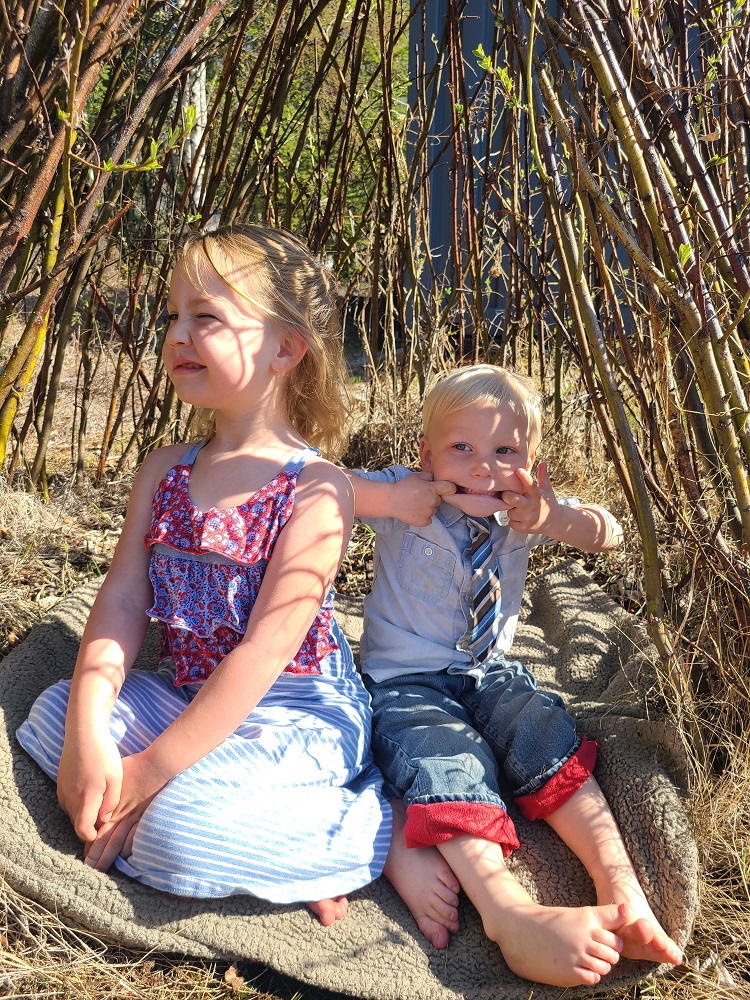
Recent Comments